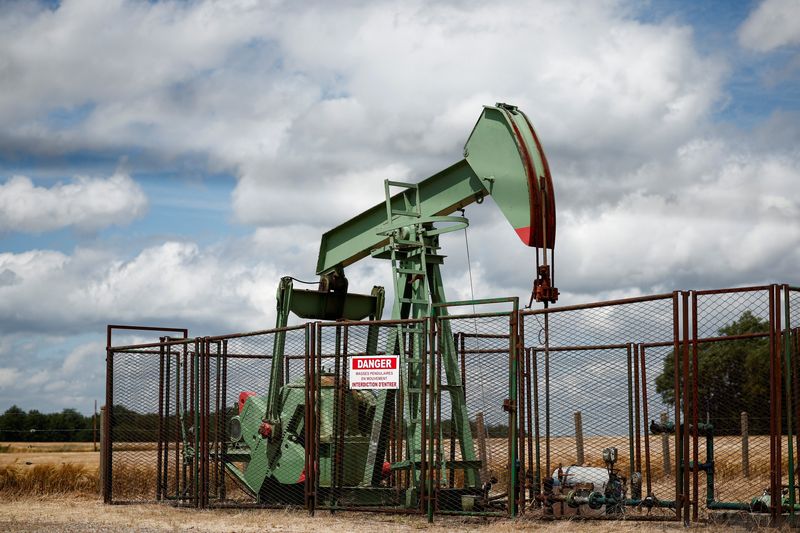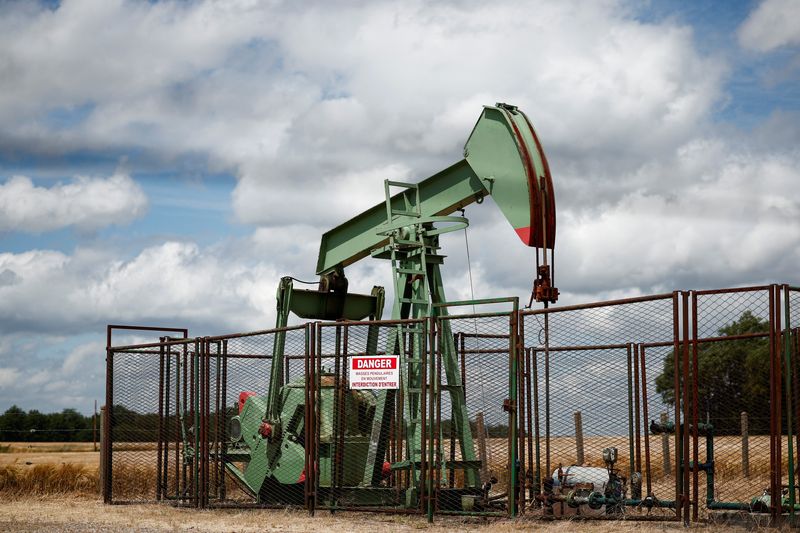Commodities
Oil hits seven-week high on demand hopes, war jitters

By Noah Browning and Deep Kaushik Vakil
LONDON (Reuters) -Oil prices hit seven-week highs on Wednesday as summer demand optimism and concerns over escalating conflicts offset an industry report that said inventories unexpectedly rose.
futures for August, due to expire on Thursday, were up 20 cents to $85.53 a barrel by 1235 GMT, while the more active September contract gained 21 cents to $84.74.
U.S. West Texas Intermediate crude was up 3 cents to $81.60 per barrel.
“The current snapshot presents an underwhelming picture but there are green shoots that indicate a more optimistic outlook,” said Tamas Varga of oil broker PVM.
The Brent price being $8 over the lows hit in early June “shows genuine optimism that the global oil balance will eventually tighten,” Varga added.
Both benchmarks, having recovered strongly in the last two weeks, gained more than $1 in the previous session to seven-week peaks after a Ukrainian drone strike led to an oil terminal fire at a major Russian port.
In the Middle East, Israeli Foreign Minister Israel Katz warned of a possible “all out war” with Lebanon’s Hezbollah, even as the U.S. attempted to avoid a broader conflict between Israel and the Iran-backed group.
An escalating war risks supply disruption in the key oil-producing region.
“Any cooling off between both parties seems difficult in the near term, which may keep oil prices well-supported as market participants shrug off pockets of weakness on the economic front, from weaker-than-expected U.S. retail sales to mixed sets of data out of China this week,” said Yeap Jun Rong, a market strategist at IG in Singapore.
China data this week showed May industrial output lagged expectations, but retail sales, a gauge of consumption, marked the quickest growth since February.
Meanwhile, U.S. crude stocks rose by 2.264 million barrels in the week ended June 14, market sources said on Tuesday, citing American Petroleum Institute figures. Analysts polled by Reuters had expected a 2.2 million barrel draw in crude stocks.

However, gasoline inventories fell by 1.077 million barrels, while distillates rose by 538,000 barrels, the sources said, speaking on condition of anonymity. [API/S]
Official stocks data from the U.S. Energy Information Administration is due at 1500 GMT.
Commodities
Oil prices rise; U.S. crude inventories plunge, Russia-Ukraine truce eyed
Commodities
India’s Reliance to stop buying Venezuelan oil over US tariffs, sources say
Commodities
Oil prices climb on Venezuela supply worries

 Forex3 years ago
Forex3 years agoForex Today: the dollar is gaining strength amid gloomy sentiment at the start of the Fed’s week

 Forex3 years ago
Forex3 years agoUnbiased review of Pocket Option broker

 Forex3 years ago
Forex3 years agoDollar to pound sterling exchange rate today: Pound plummeted to its lowest since 1985

 Forex3 years ago
Forex3 years agoHow is the Australian dollar doing today?

 Cryptocurrency3 years ago
Cryptocurrency3 years agoWhat happened in the crypto market – current events today

 World3 years ago
World3 years agoWhy are modern video games an art form?

 Commodities3 years ago
Commodities3 years agoCopper continues to fall in price on expectations of lower demand in China

 Economy3 years ago
Economy3 years agoCrude oil tankers double in price due to EU anti-Russian sanctions























